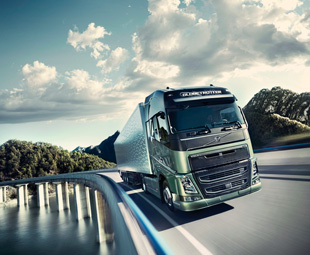Lending a technological hand

Technology makes our lives easier, safer and more comfortable … And, for the transport industry things aren’t any different. JACO DE KLERK explores some of the technologies that are enriching the lives of long-distance line-haul drivers.
According to Mercedes-Benz South Africa’s vice president of commercial vehicles, Kobus van Zyl, our country’s long-distance drivers’ average age is increasing. They have very unhealthy lifestyles and between 30 to 40 percent are, sadly, infected with HIV/Aids. “This is despite a number of programmes by government and the private sector to address these issues,” he points out.
Van Zyl adds that all industry players, therefore, have to step things up and work together even more closely to assist these road farers that are so vital to our economy. “We understand that we need to assist our drivers in operating the vehicles,” he emphasises … And that is exactly what original equipment manufacturers are doing through the use of technology.
One example from Mercedes-Benz is the emergency braking system, Active Brake Assist (ABA), which the company offers for its Actros model. This assistance system avoids rear-end collisions, or substantially reduces the severity of an accident, which is reassuring as one third of all crashes involving trucks are rear-enders.
The system works with radars that detect moving vehicles (for ABA one, two and three) and stationary obstacles (for ABA two and three) as well as the speed differentials and distance between the truck and the “pending” accident.
First it warns the driver audibly and visibly (with an illuminated triangle and a piercing sound) if it detects that actions need to be taken. Then a warning brake is initiated if the vehicle’s speed is still too high. And third, the system applies full emergency braking if the driver fails to react.
So, ABA provides an added safety “barrier”. While 38 percent of drivers do complete emergency braking before a collision – without the system – 20 percent fail to brake hard enough and 39 percent don’t react at all. This can be attributed to fatigue or shock, which slows a person’s reaction time.
The key differences between the system’s three generations are: the distance at which the radar is able to detect objects and vehicles, and when it can implement the emergency braking.
The first version of ABA is capable of detecting moving objects 150 metres ahead of the truck. The second generation of the system’s detection range was bumped up to 200 metres, and can also detect stationary obstacles and initiate a braking manoeuvre for these – for example an unexpected tailback on the freeway – thereby considerably reducing the vehicle’s speed, giving the driver time to respond or lessen the collision damage if an accident does occur.
ABA three has the same range as ABA two, but can automatically initiate emergency braking in response to a stationary obstacle. This means that, in addition to lessening the damage caused by head-on collisions, it can also prevent them entirely – depending on the speed being driven.
However, technological advances aren’t just about improving vehicle safety, but overall productivity as well … Enter Volvo’s I-See, a software system in the new Volvo FH that imitates good driving styles, utilising the vehicle’s kinetic energy and accelerating in time to avoid unnecessary gear changing.
“I-See is an autopilot linked to the truck’s cruise control, taking over and handling gear changes, the throttle and brakes on gradients – ensuring that they all operate in the most fuel-efficient way possible,” explains Hayder Wokil, product manger of Volvo Trucks, Calgary, Canada.
“I-See freewheels as much as possible – so on certain stretches of road no fuel is used at all.” He adds that, in this way, fuel consumption can be cut by up to five percent – with this figure being based on the results of simulations and tests on public roads.
However, for this fuel saving wonder to be achieved with the original I-See software, the vehicle had to have been driven on the actual hilly route before, for the topography information to be stored. But this is not the case with the latest I-See software. “Your own truck need not have driven on a particular hill, even once, and it will still be able to reap the full benefit of the system’s potential,” says Christer Pehrsson, business area manager for Volvo AB’s long-haul operations. “It’s enough that another vehicle fitted with I-See has covered that stretch of road.”
This is made possible as the topography information from all vehicles equipped with the new I-See, is wirelessly dispatched to the Volvo Trucks central server. And, when another I-See truck is about to drive the same stretch, the system will automatically obtain the information from the server. Thus, with this new version, all trucks sporting I-See (irrespective of which haulage firm they work for) always have access to current and updated information about the gradients they come across.
It is clear that technological advances aren’t only enriching the lives of our long-distance drivers, but also improving transport operators’ bottom line … So, with digital aid constantly improving, the future of line hauling will be even easier, safer, more comfortable and more economic.
Published by
Focus on Transport
focusmagsa




